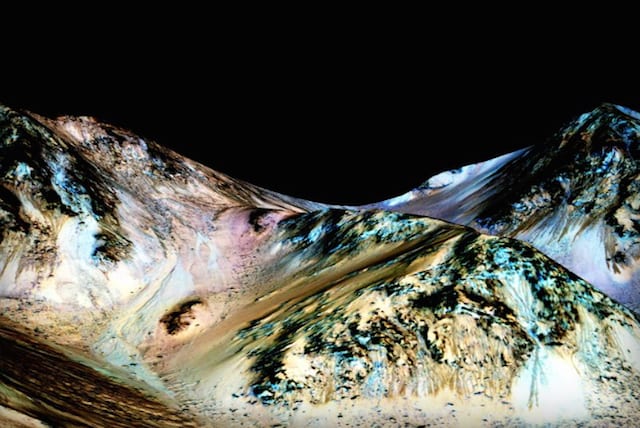
Speculation has been rampant for years that what appear to be gullies on features on the surface of Mars are caused by liquid water. Now research published in Nature Geosciences confirms that liquid water does flow on Mars during the warmer seasons on the Red Planet.
The finding came from analysis of spectral data from NASA’s Mars Reconnaissance Orbiter (MRO), which has been in orbit around Mars since 2006. In 2010, MRO saw what are called recurring slope linae, dark streaks on the Martian surface that are blackish in color and about 16 feet across. During the Martian summer, the streaks become longer and thicker, then fading and shrinking in the colder times of the Martian year.
Usually, the surface temperature on Mars is a chilly -80°F, but summer days near the Martian equator can see temperatures as high as 70°F. A team at Georgia Tech speculated that when the temperature is warm enough, Martian ice melts. The water is filled with perchlorates, a type of salt, so it is briny and has a lower freezing point than pure water. As a result, the brine stays in a liquid state even as temperatures drop, and the recurring slope linae are the leftover salt deposits from the flows.

So where is the water coming from? The Georgia Tech team thinks that there are three possible sources. First, the perchlorates could pull water out of the Martian atmosphere. Second, there may be a subsurface reservoir of ice that becomes liquid from a combination of contact with the perchlorates and higher temperatures. And finally, there could even be a subsurface aquifer feeding the water.
Many other times in the past, scientists have offered evidence that seemed to show that water exists on Mars. For the first time, it appears that there is unambiguous proof that there’s liquid water on Mars. And where there’s water, there is always the possibility of microbial life.








